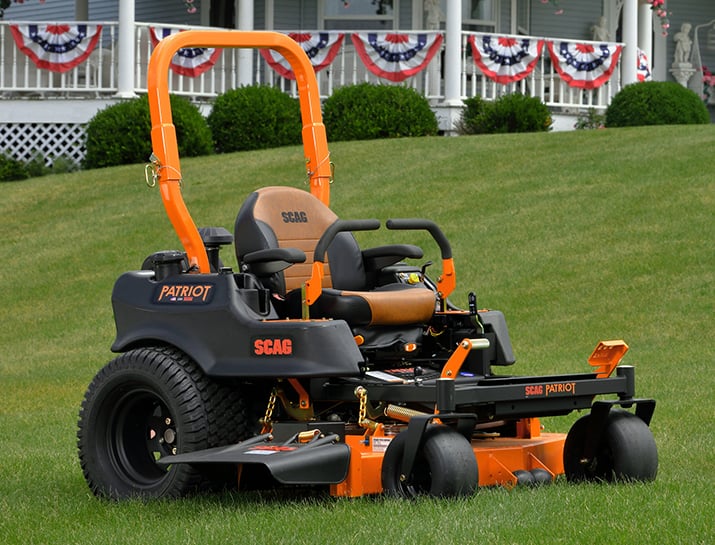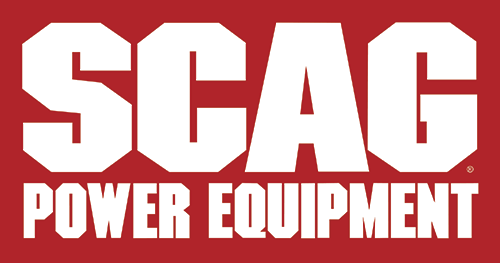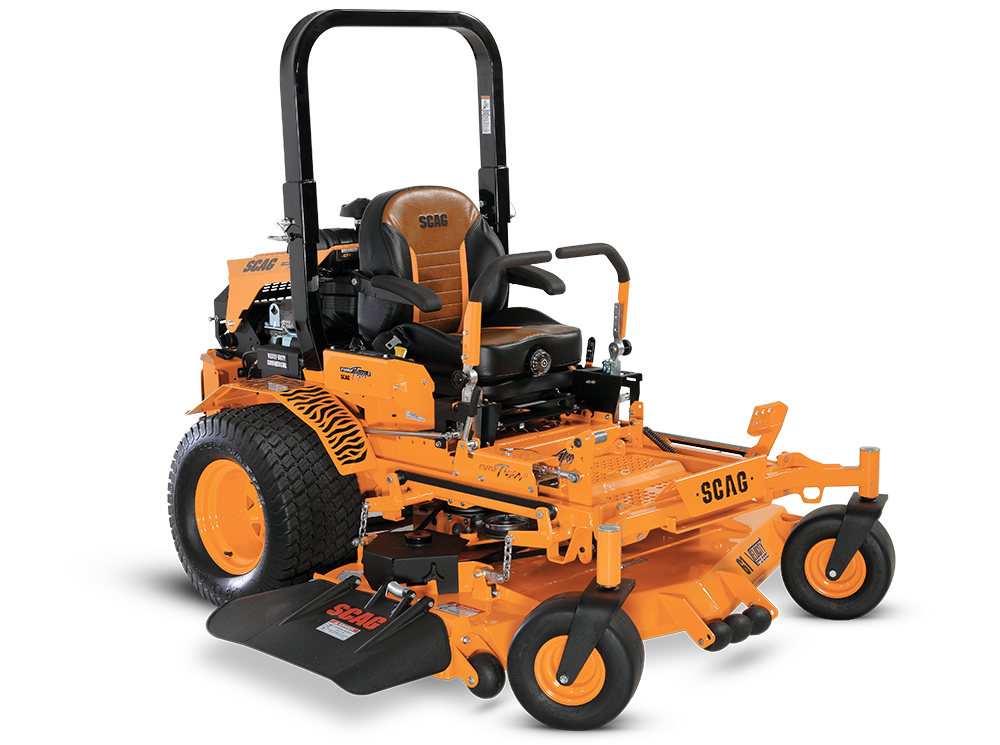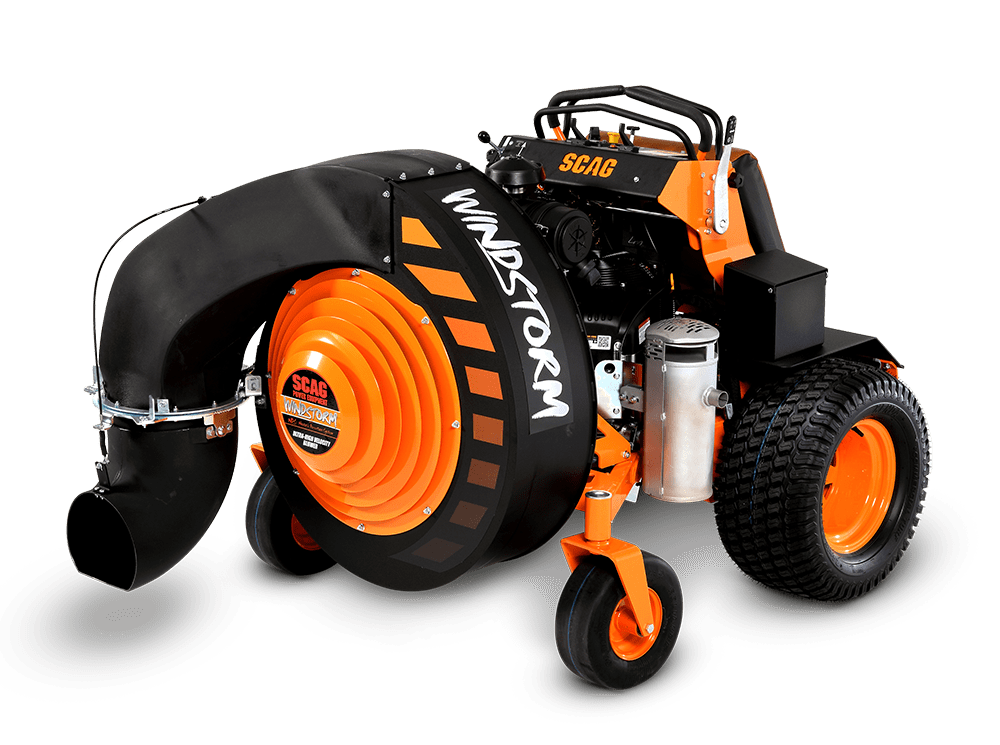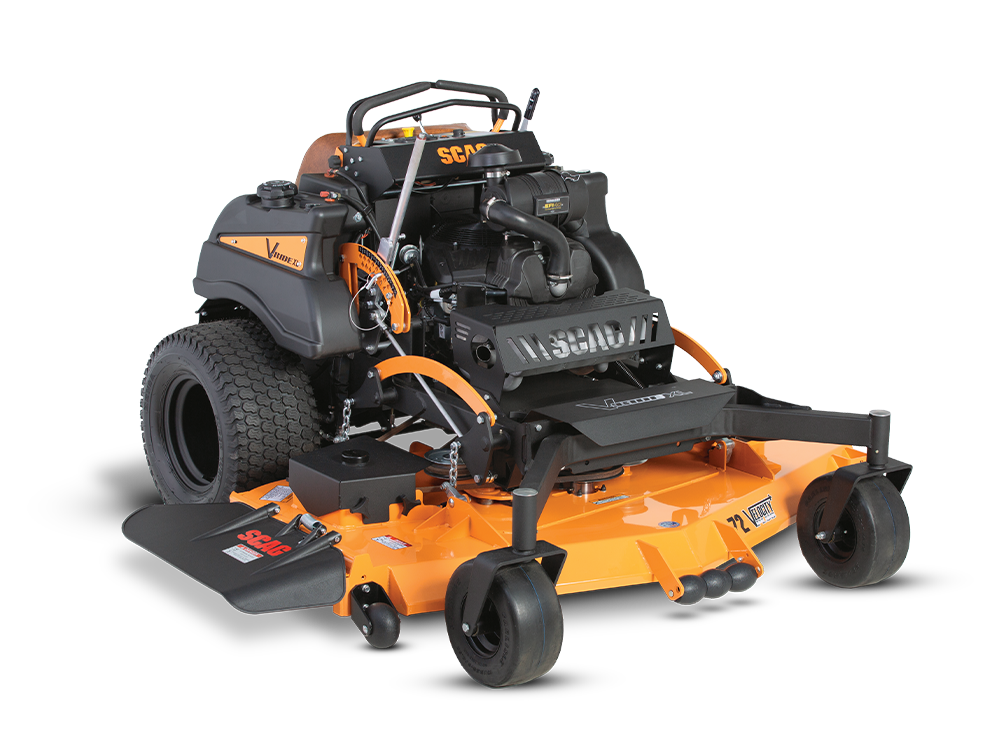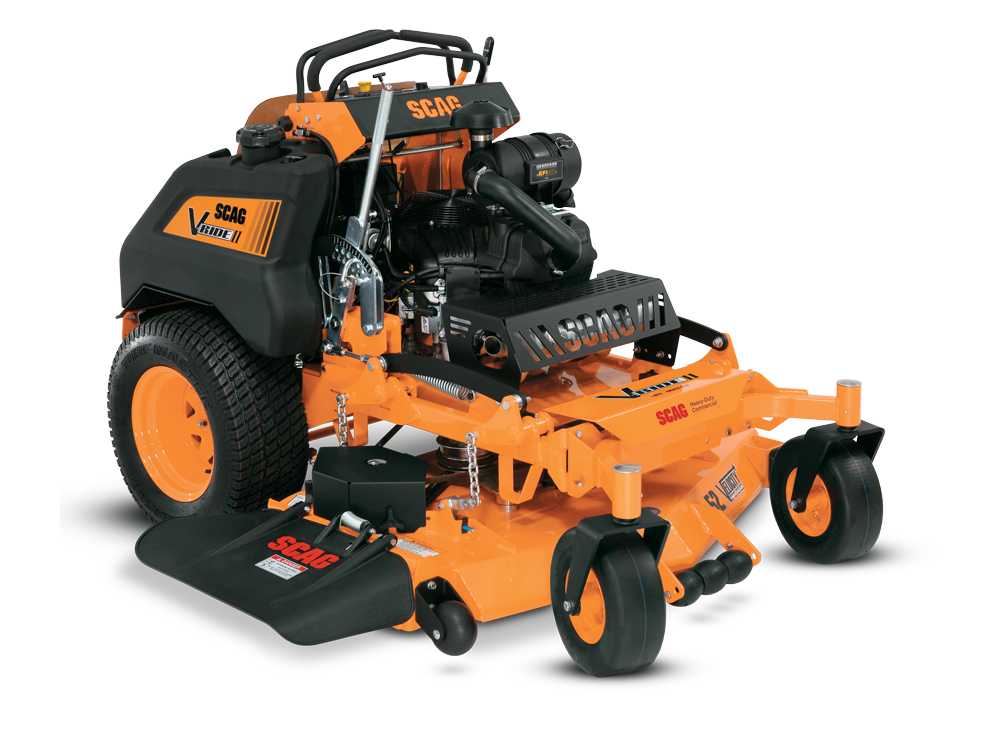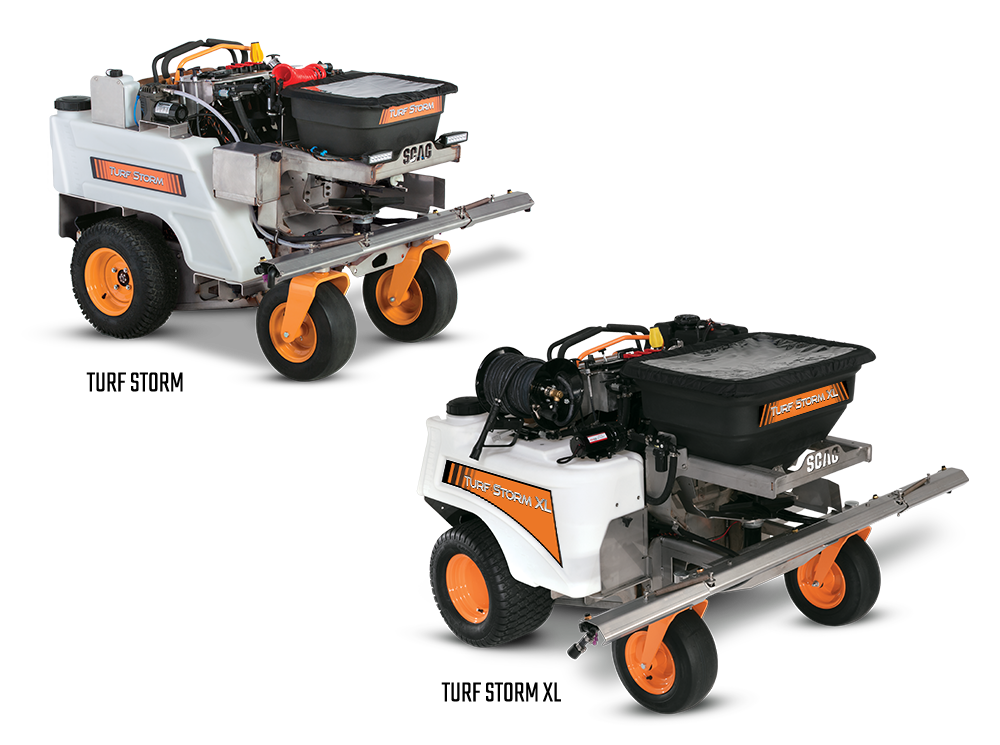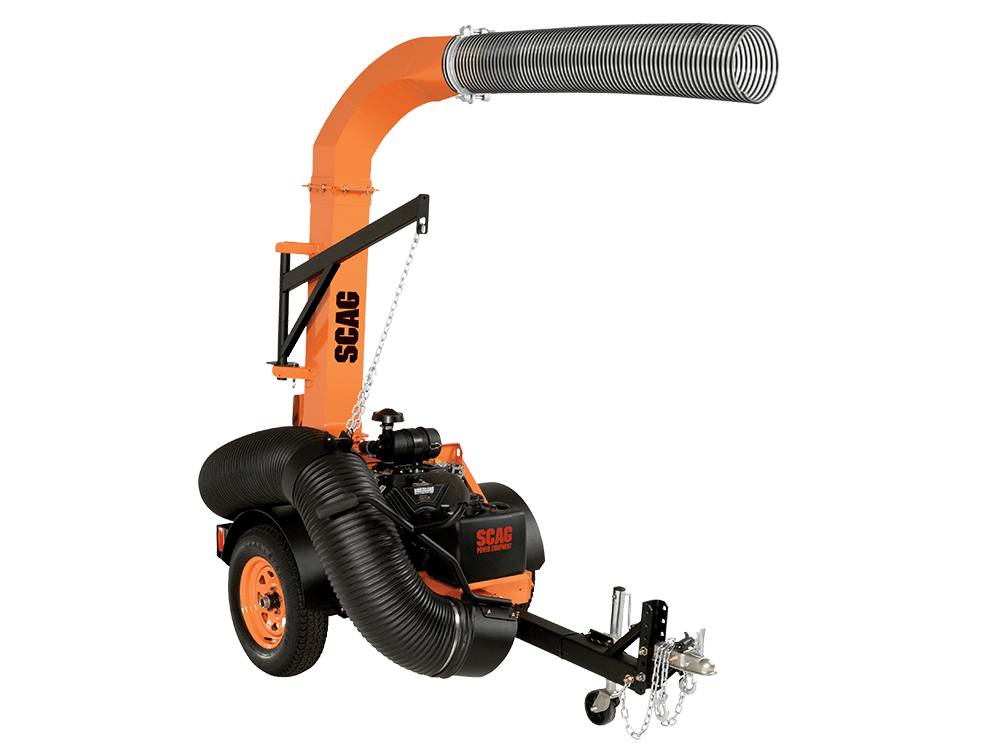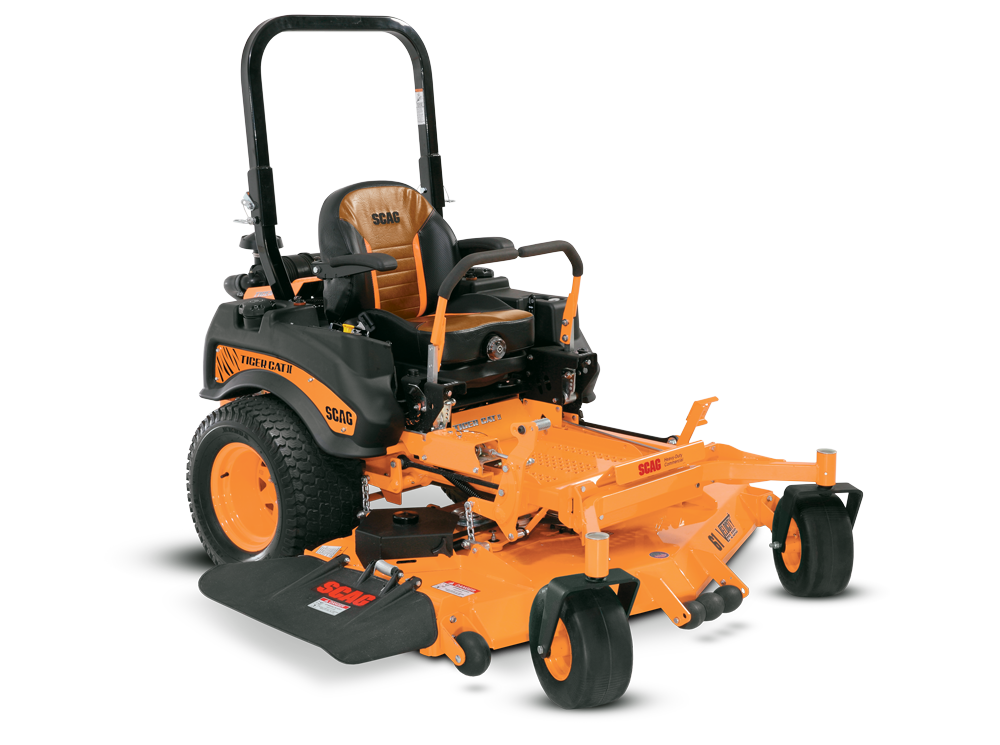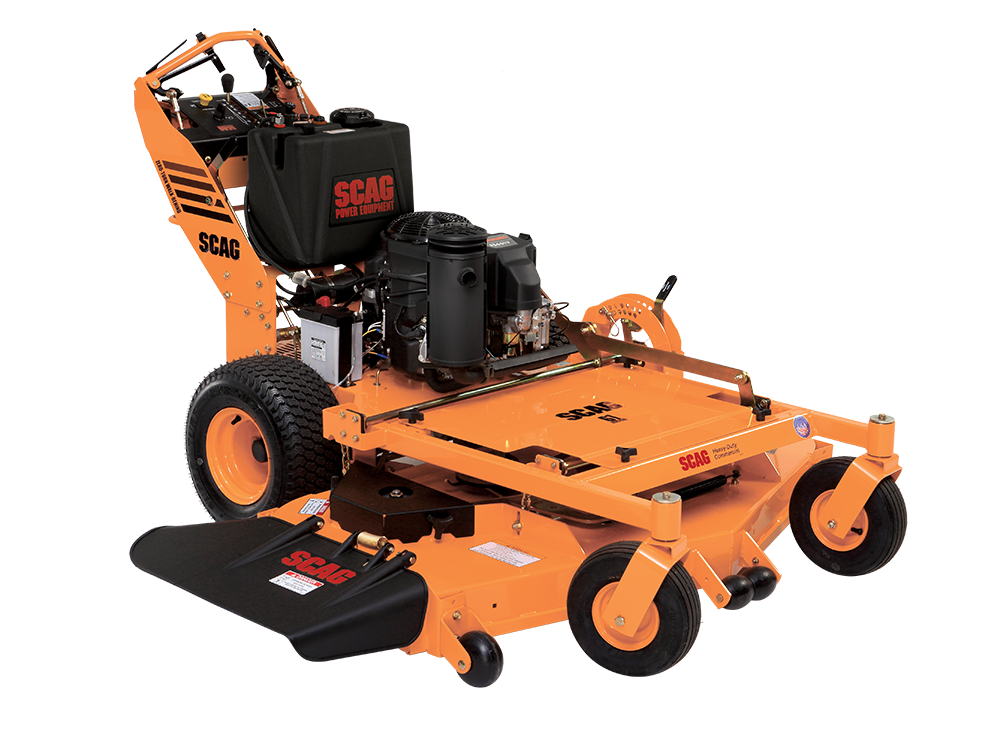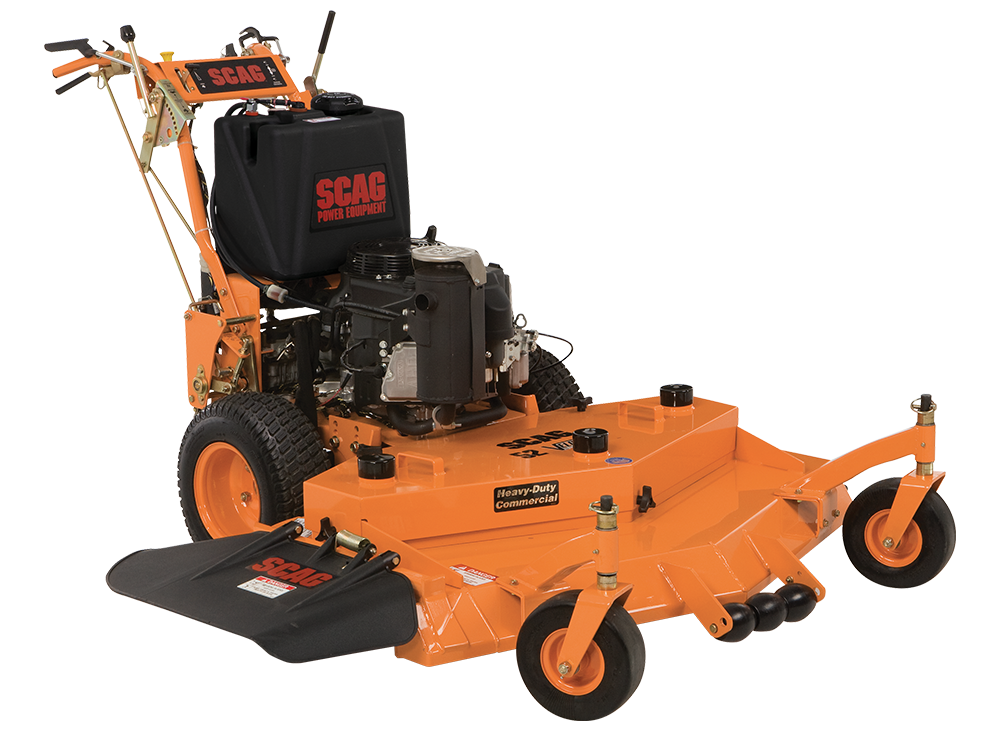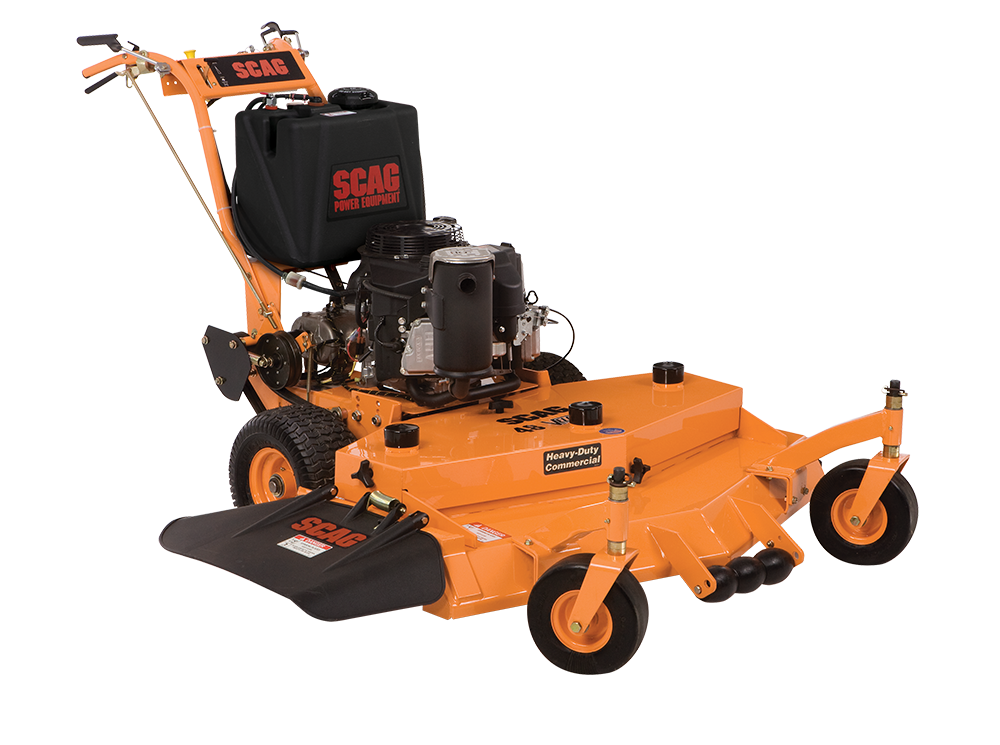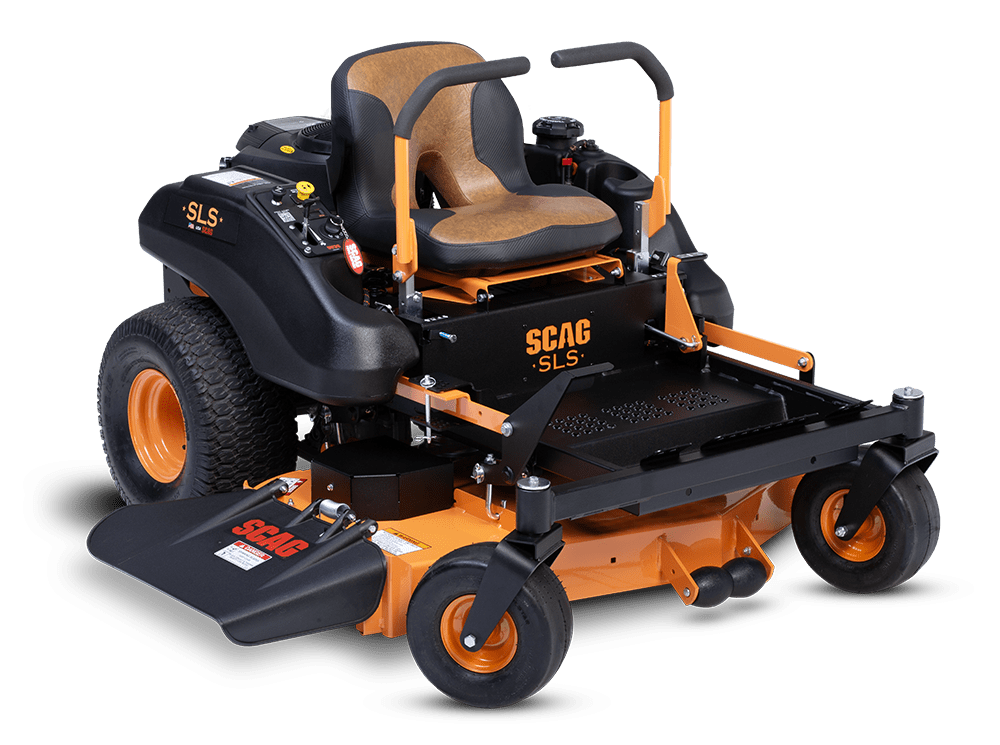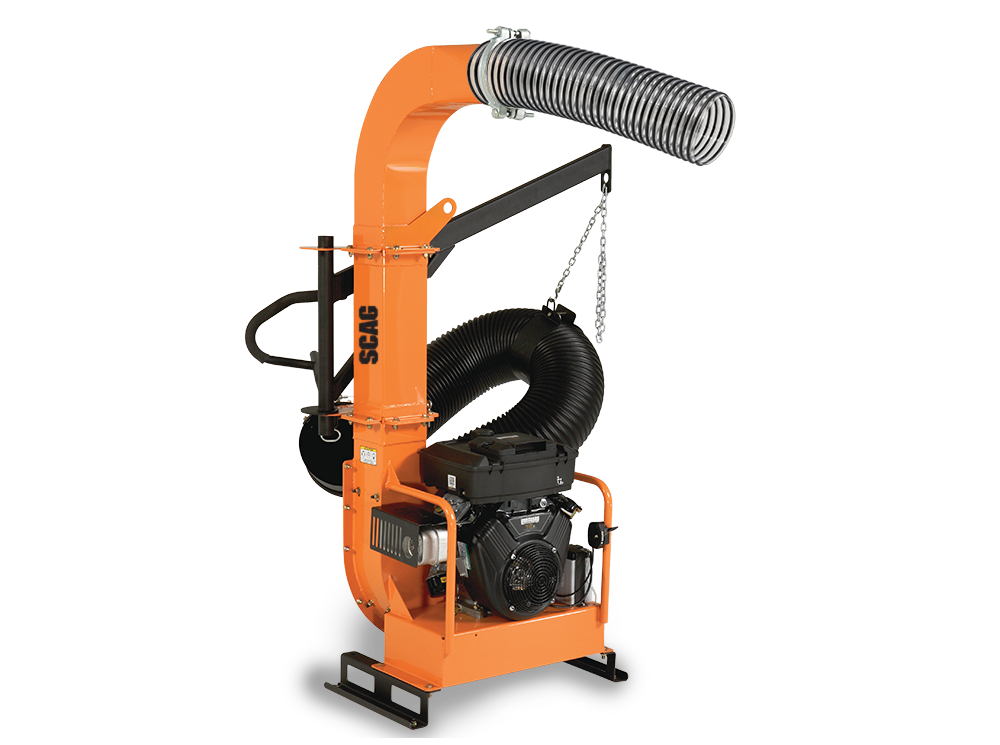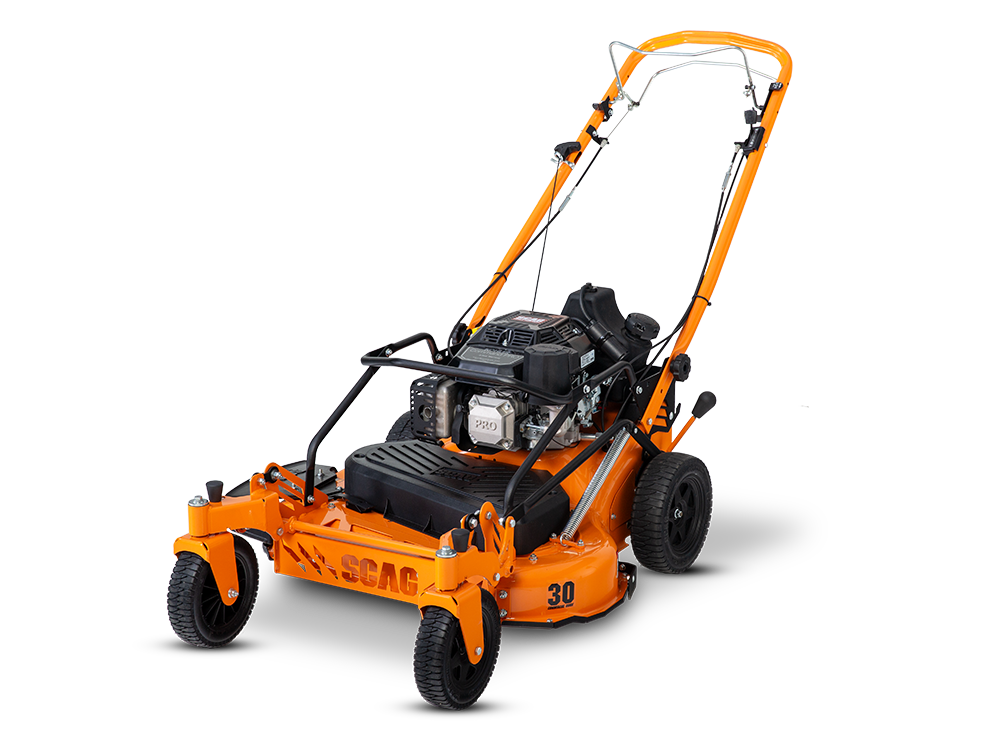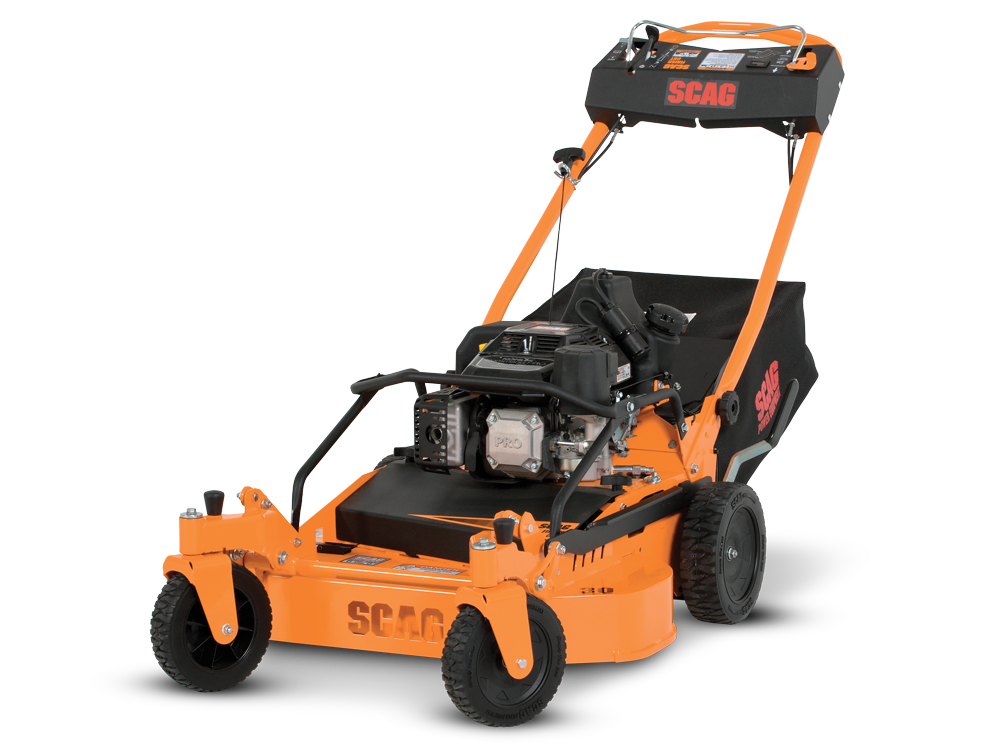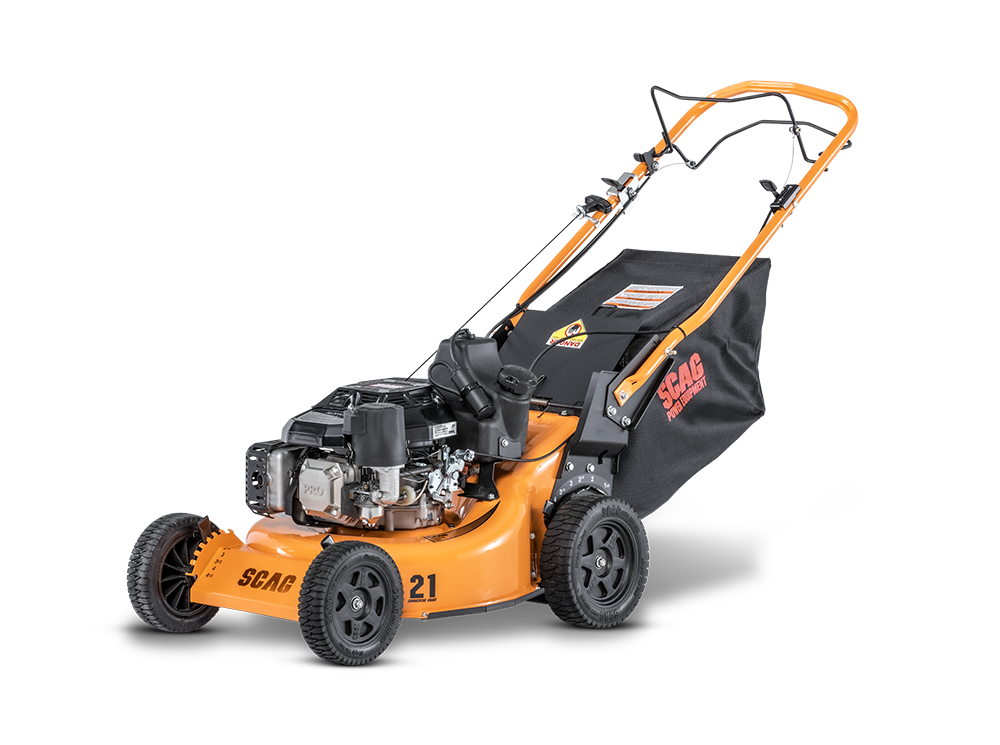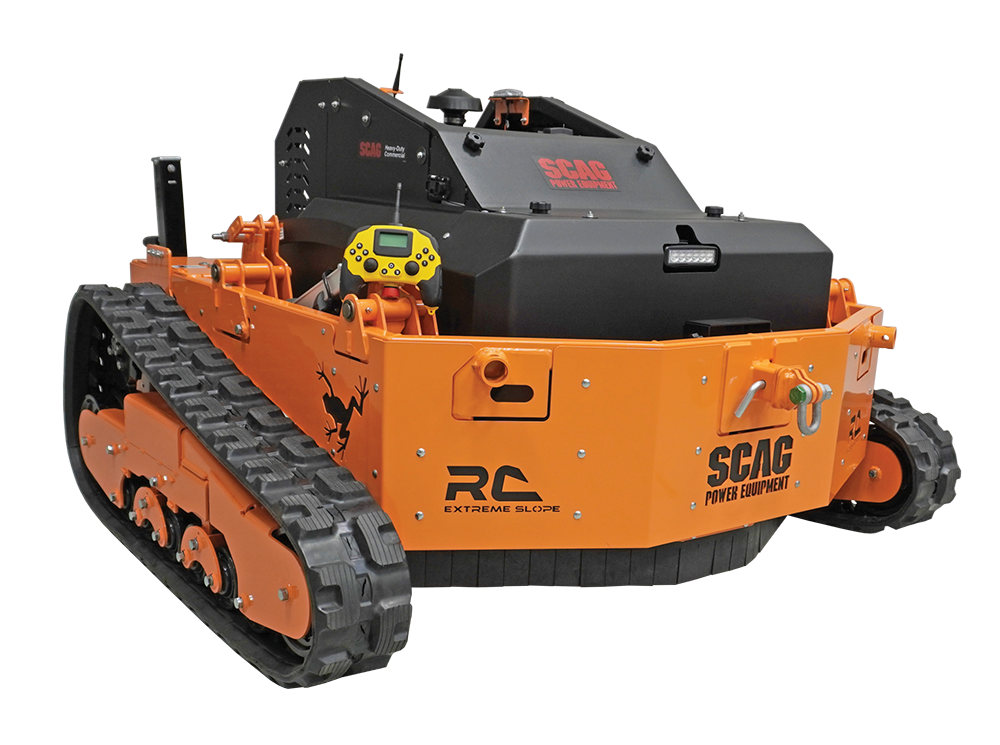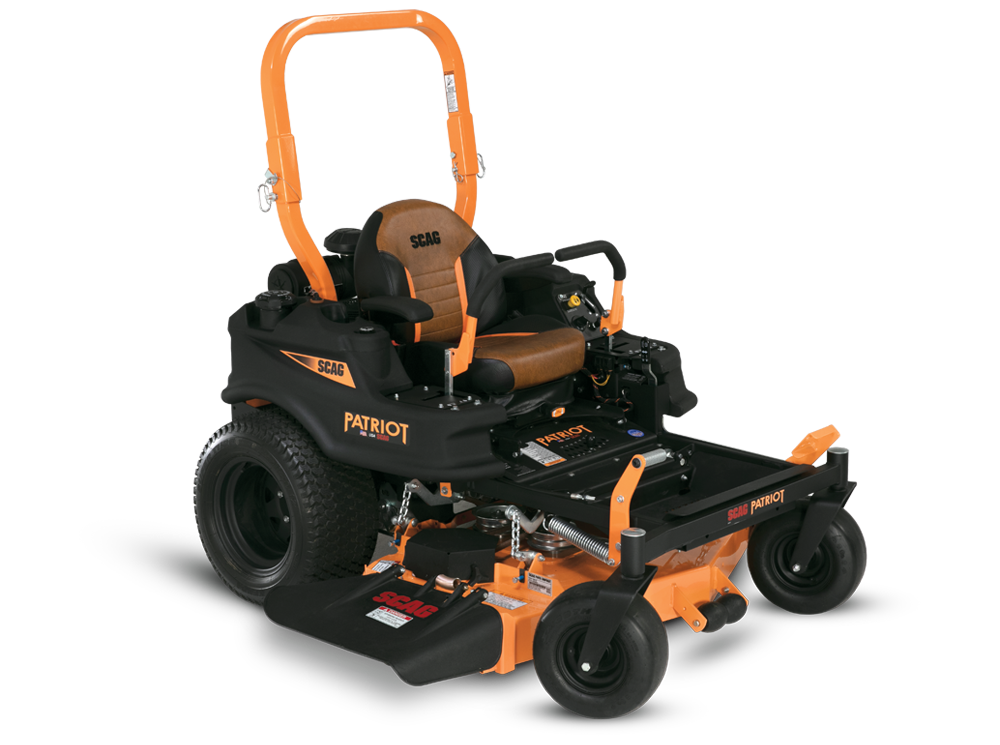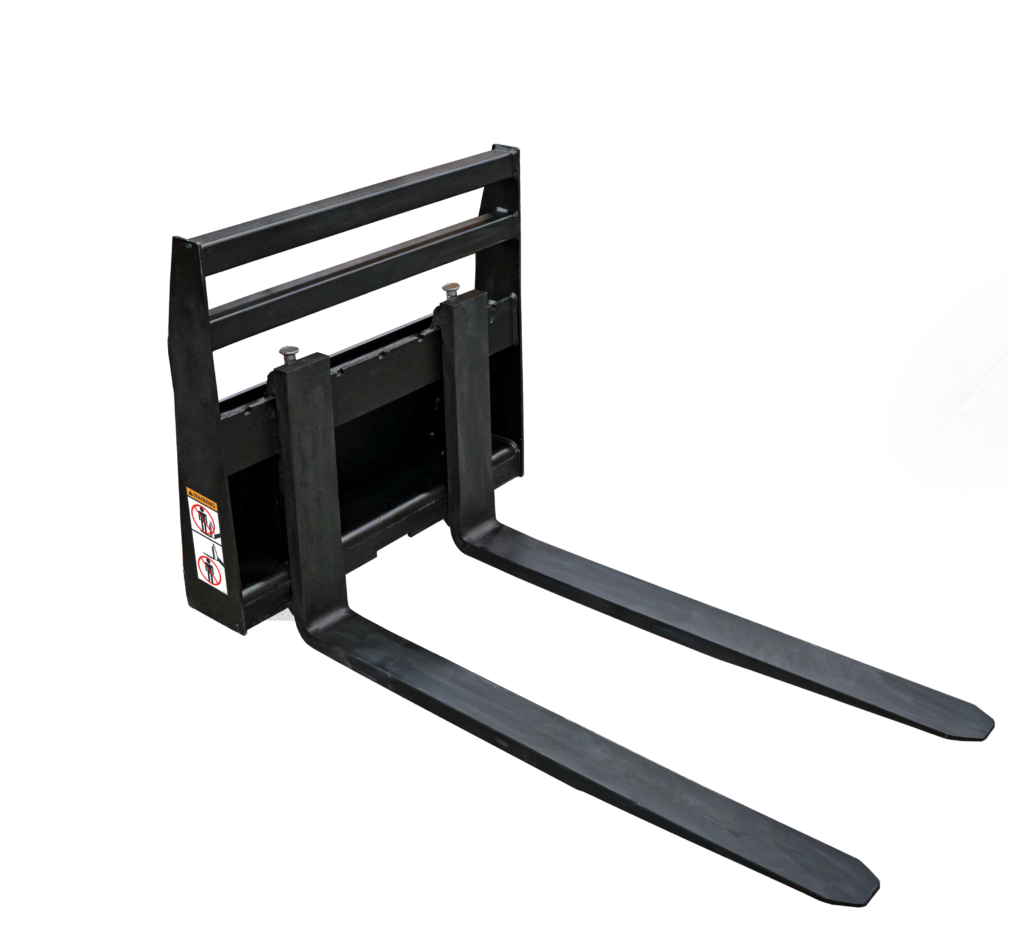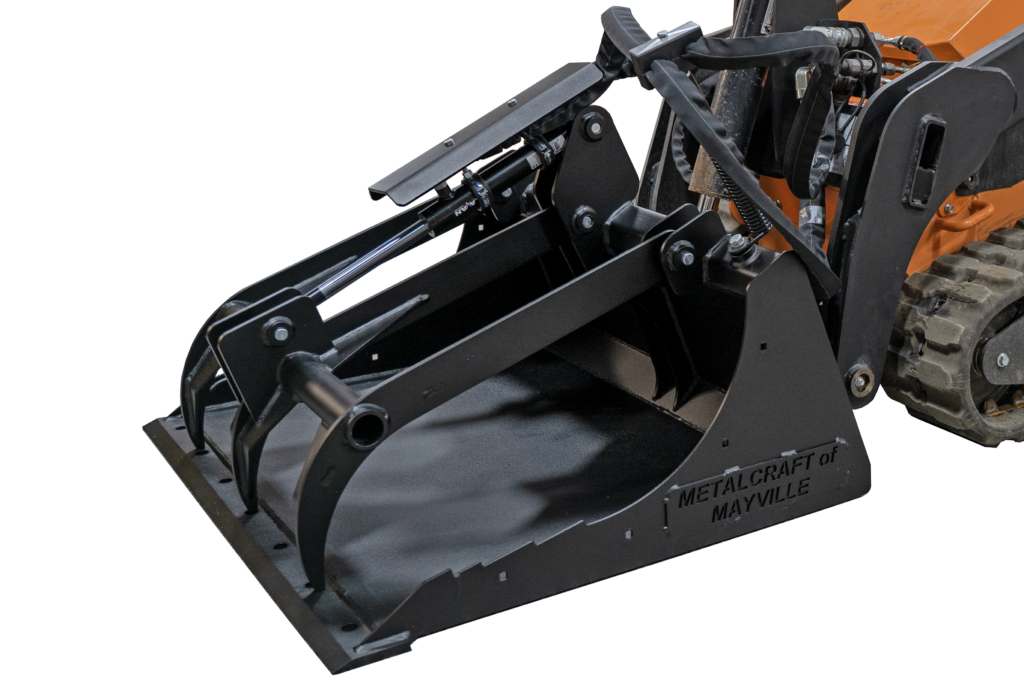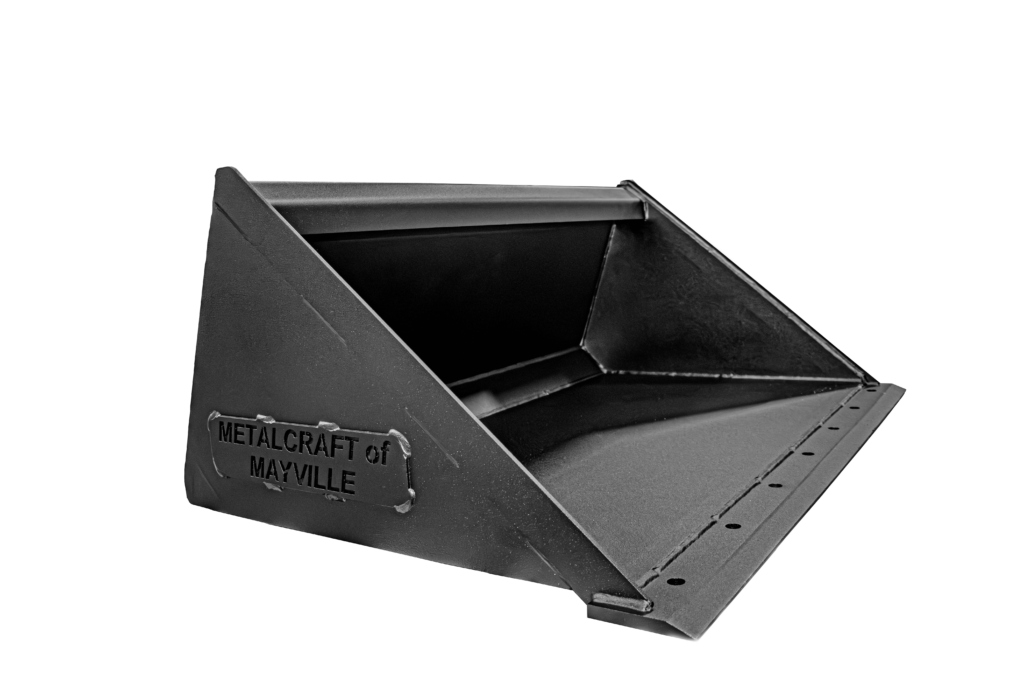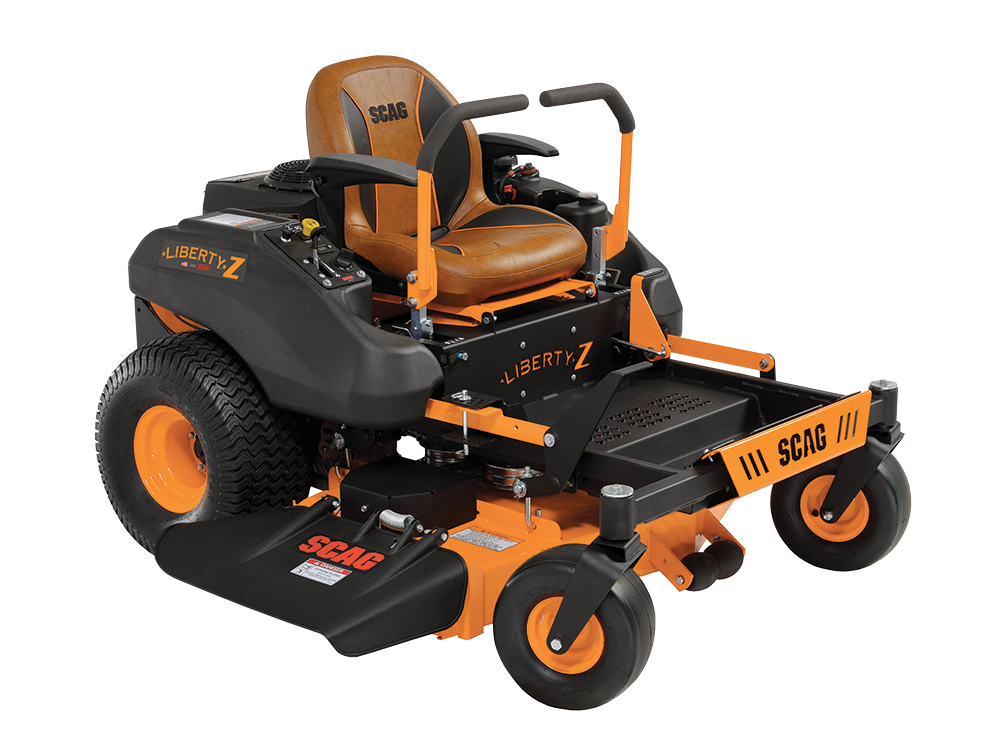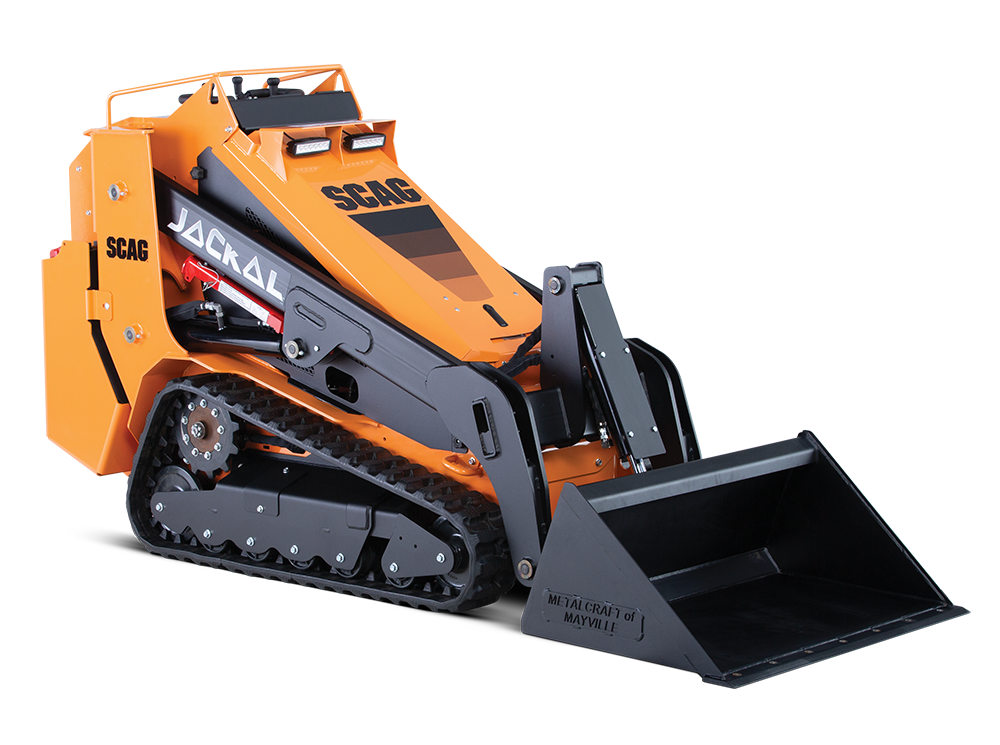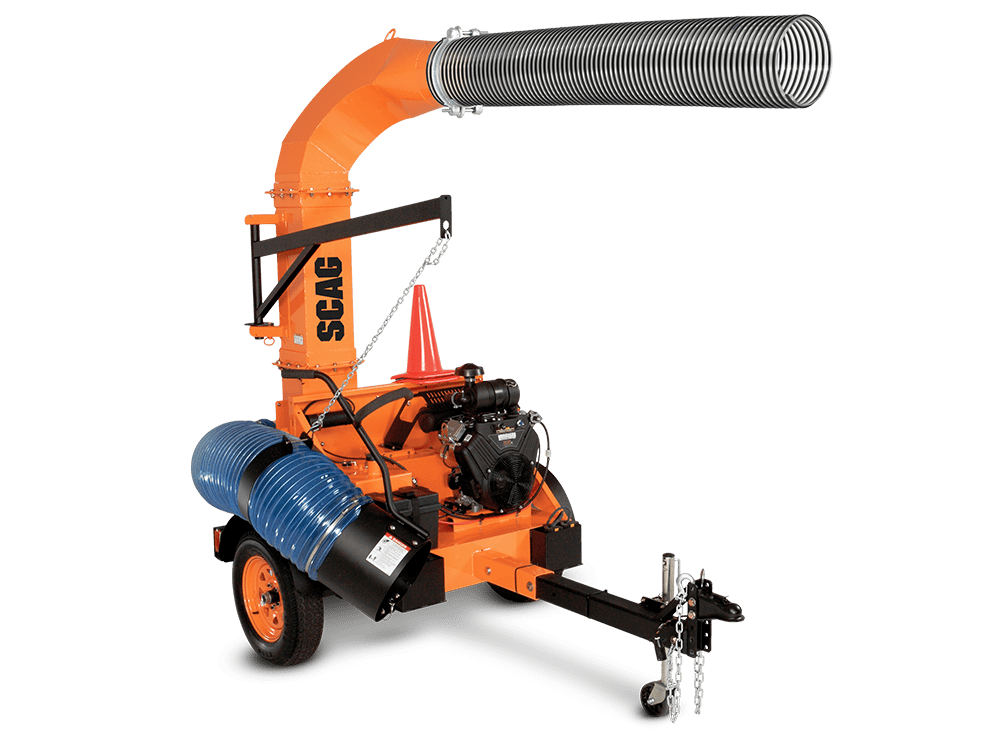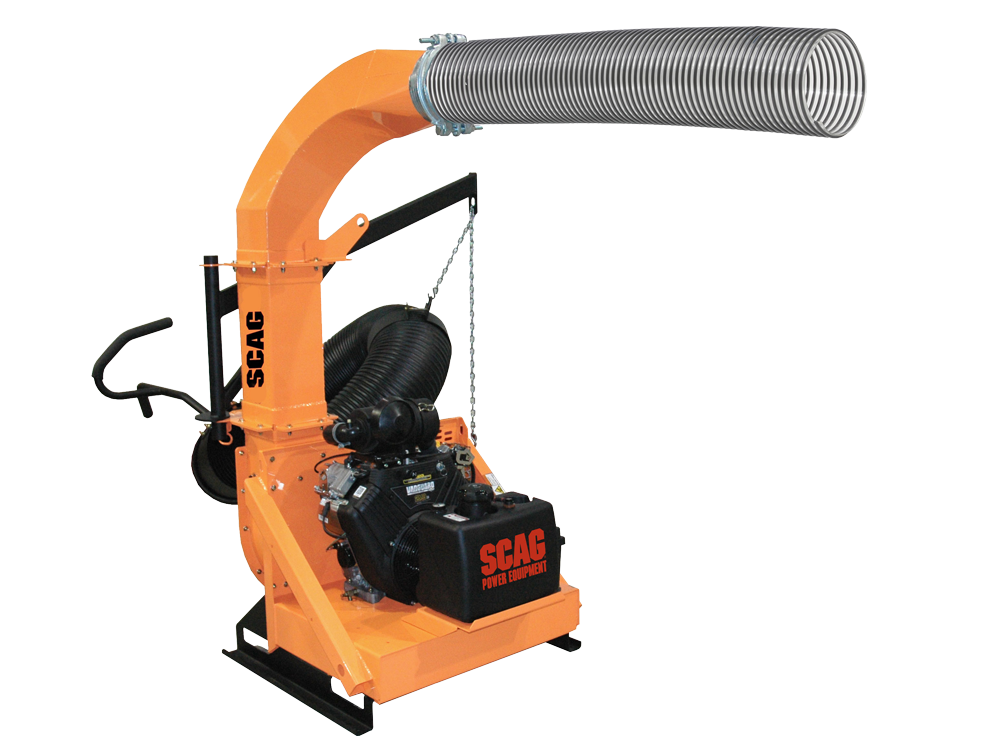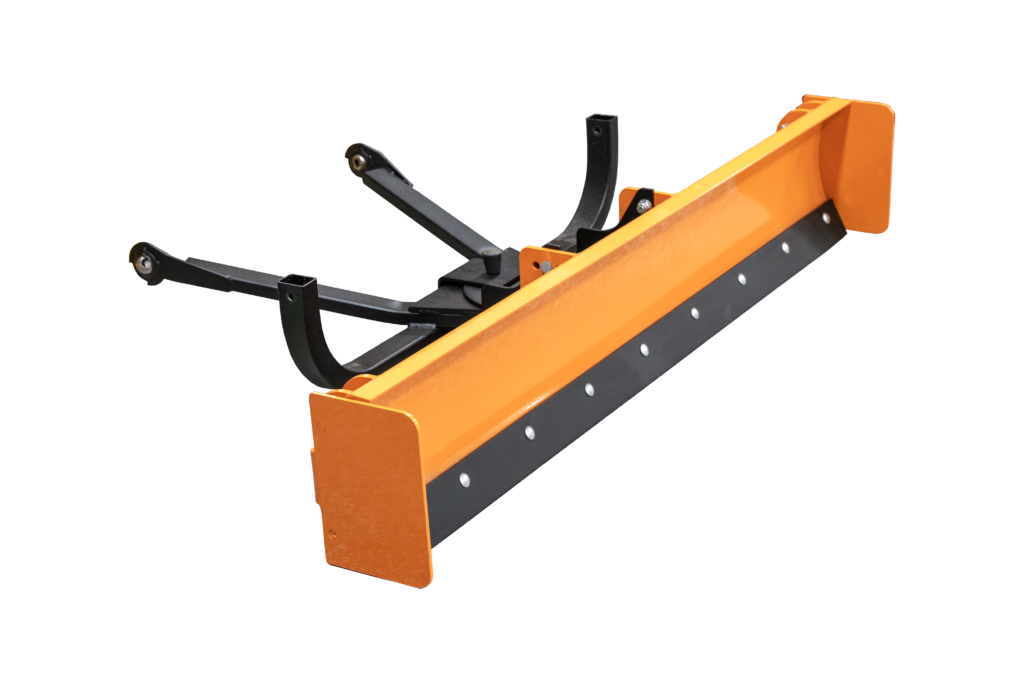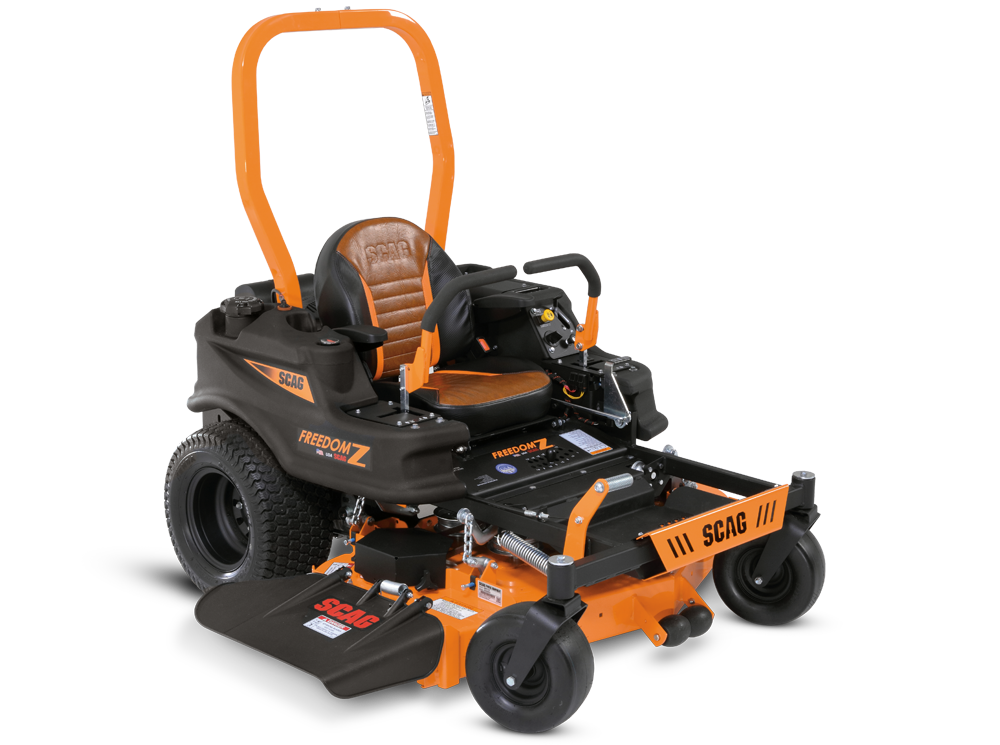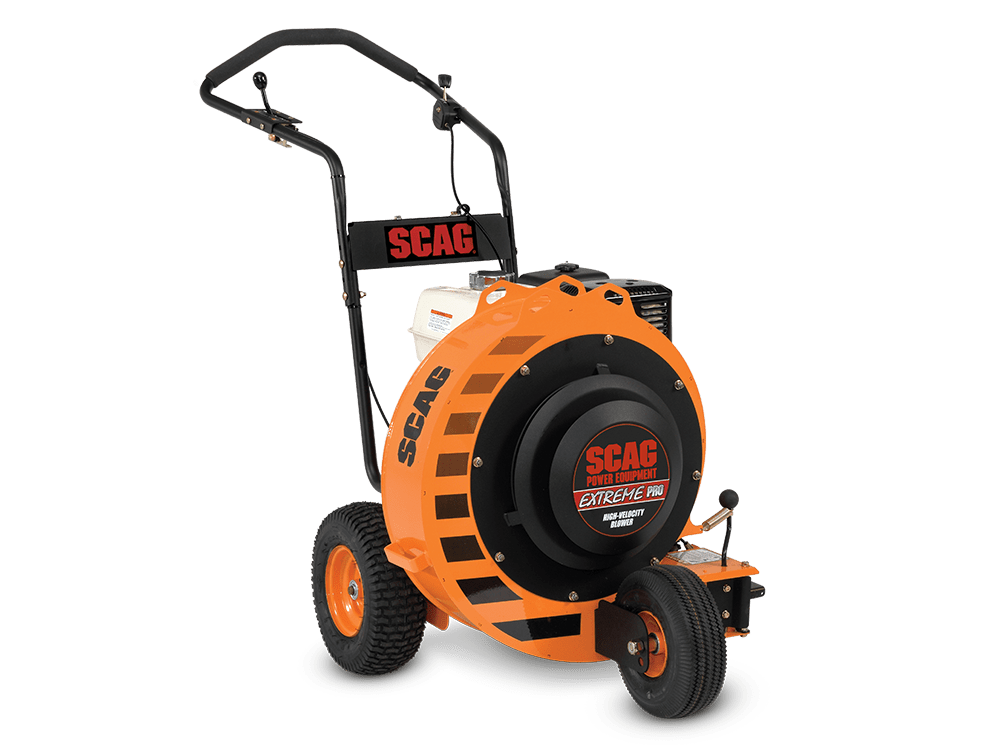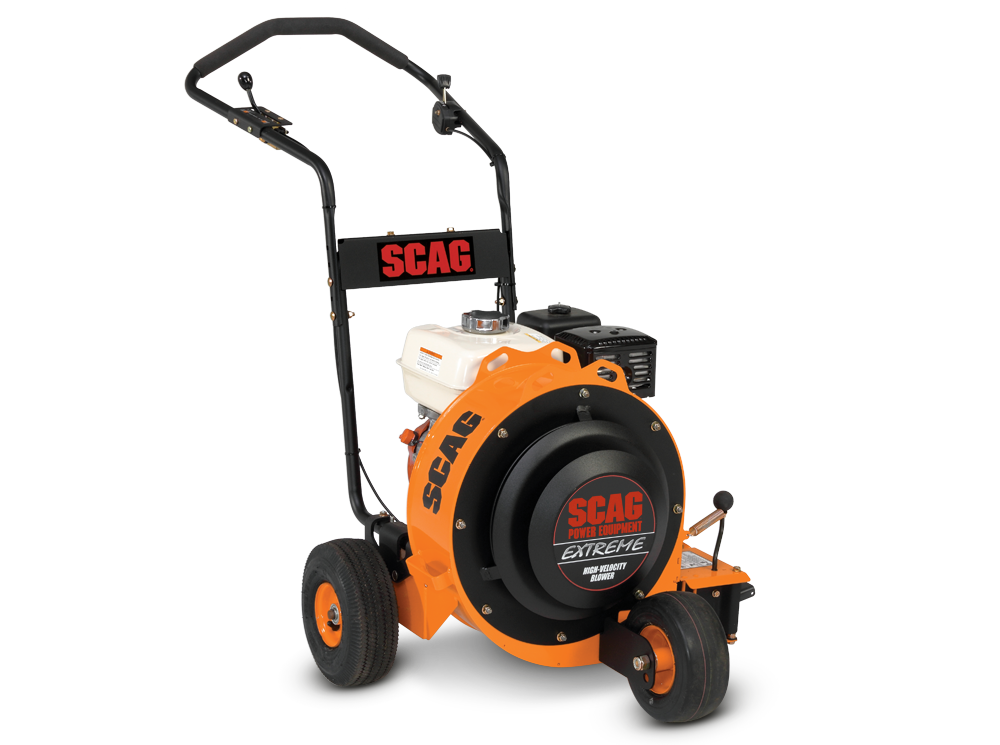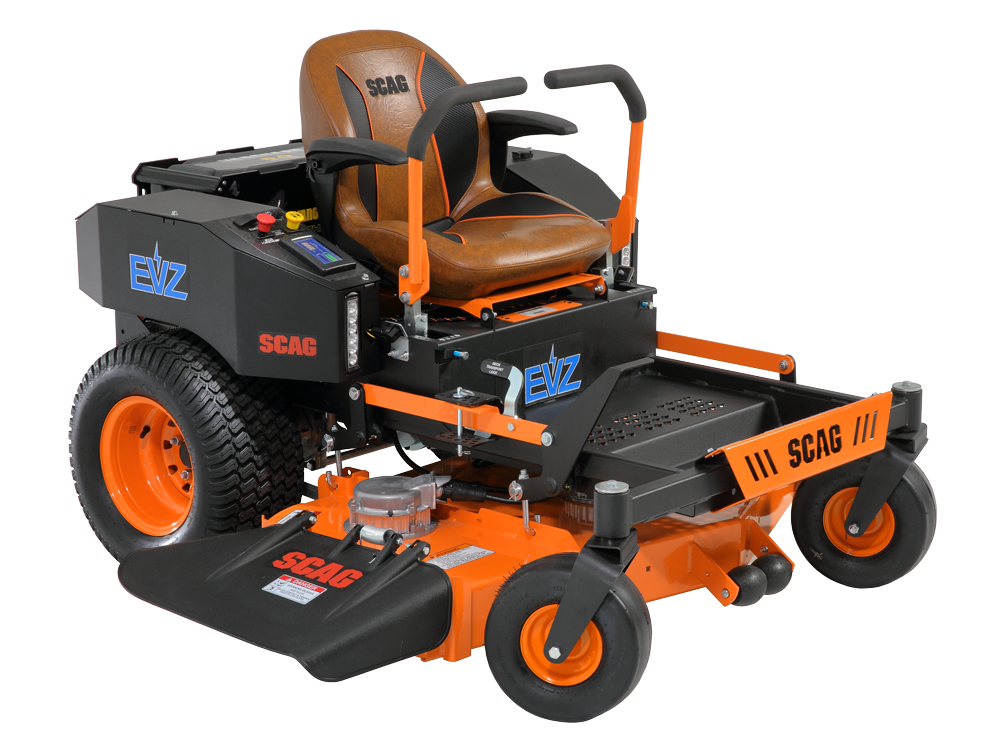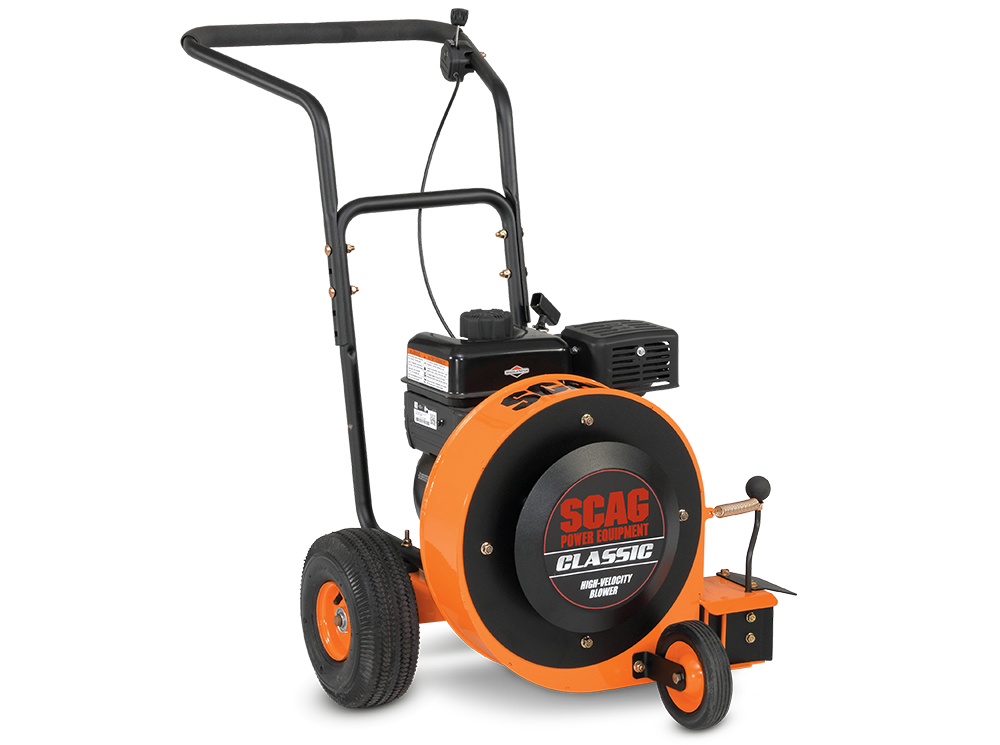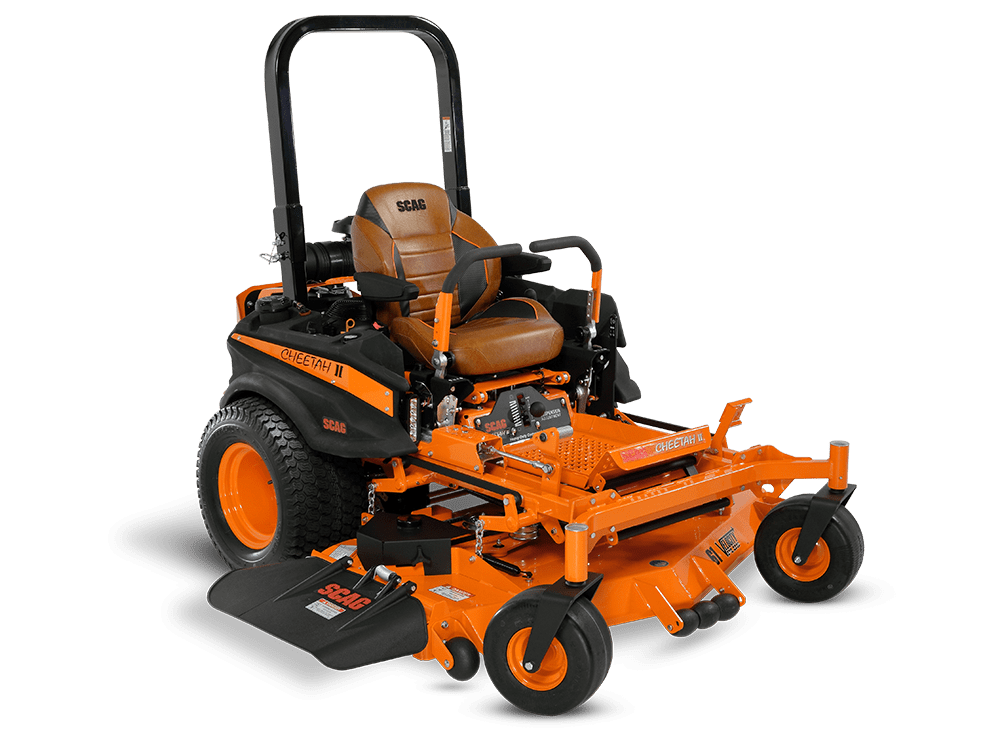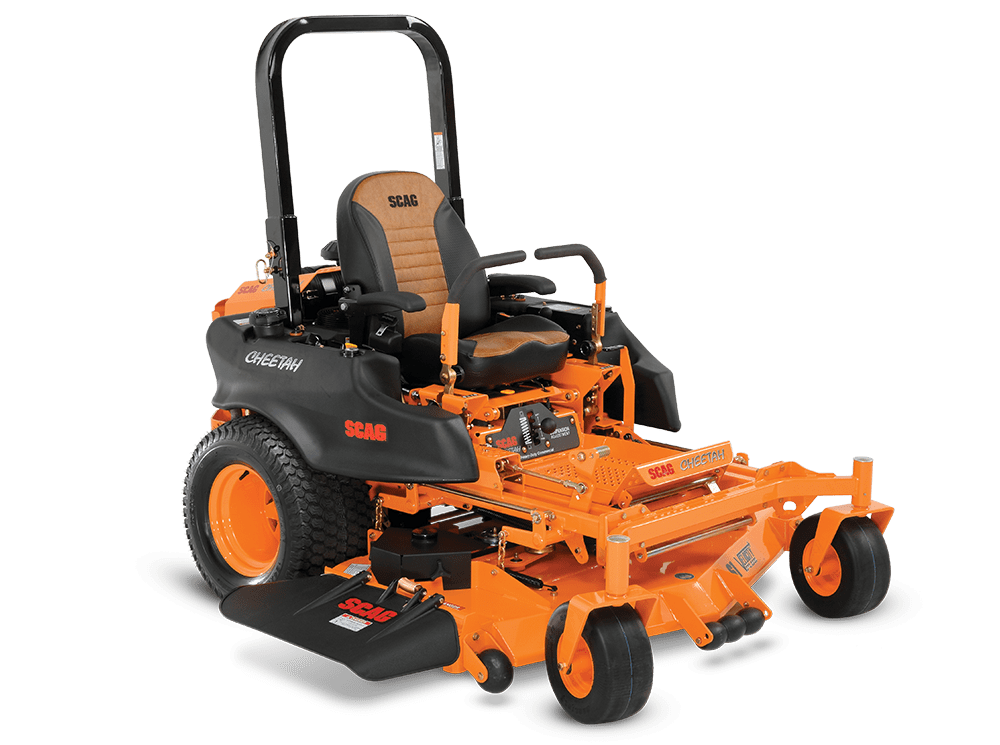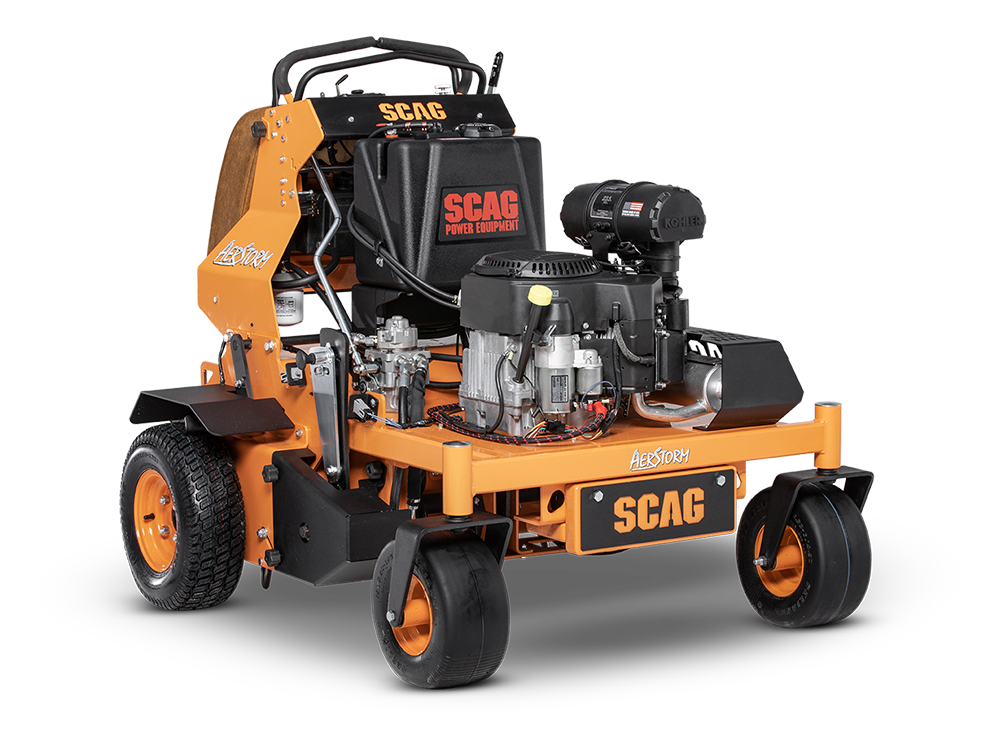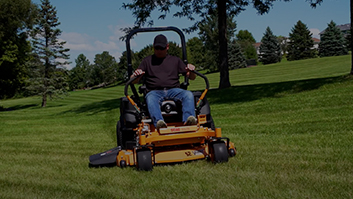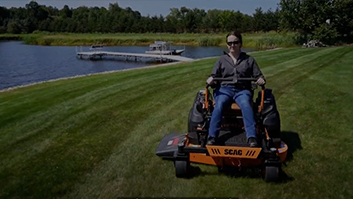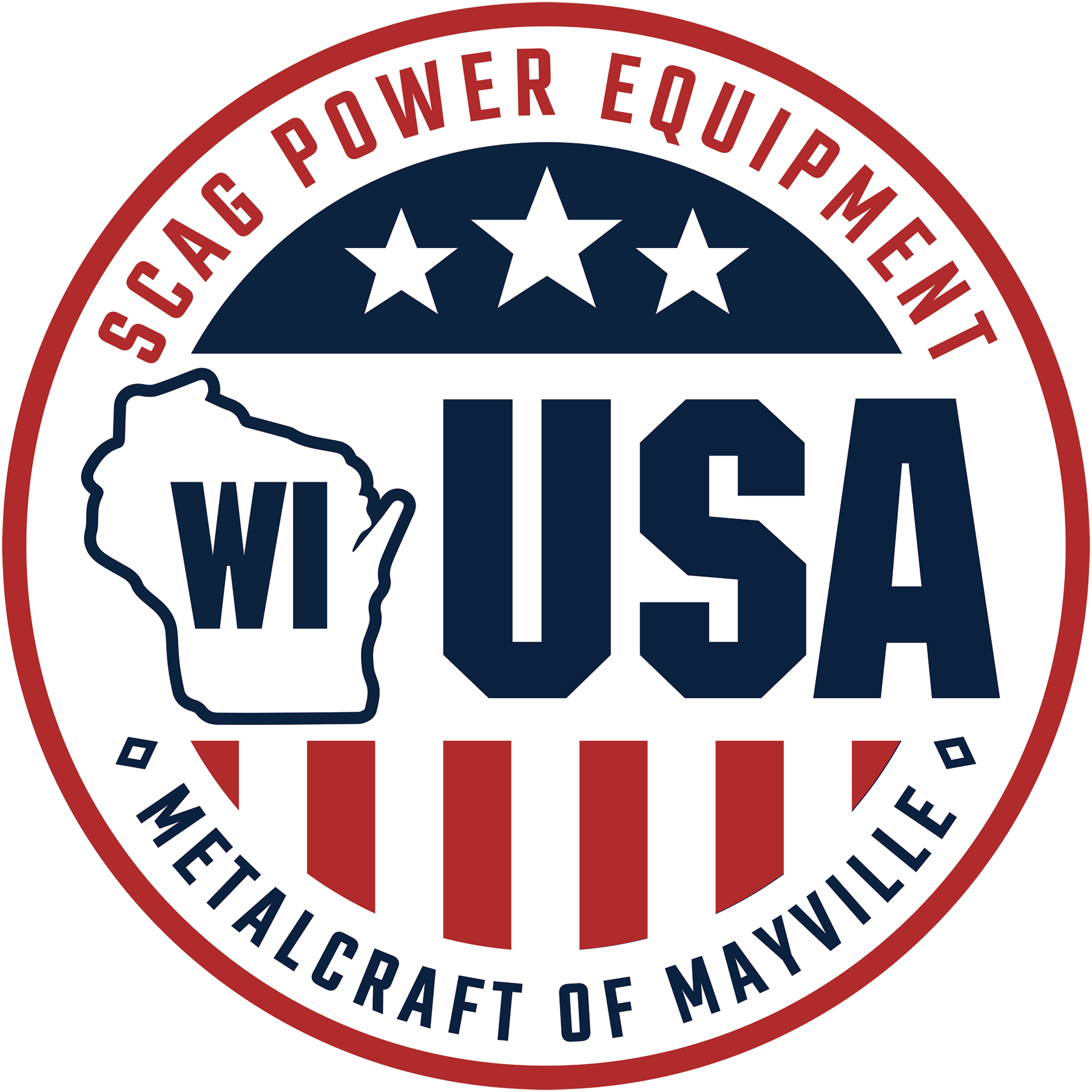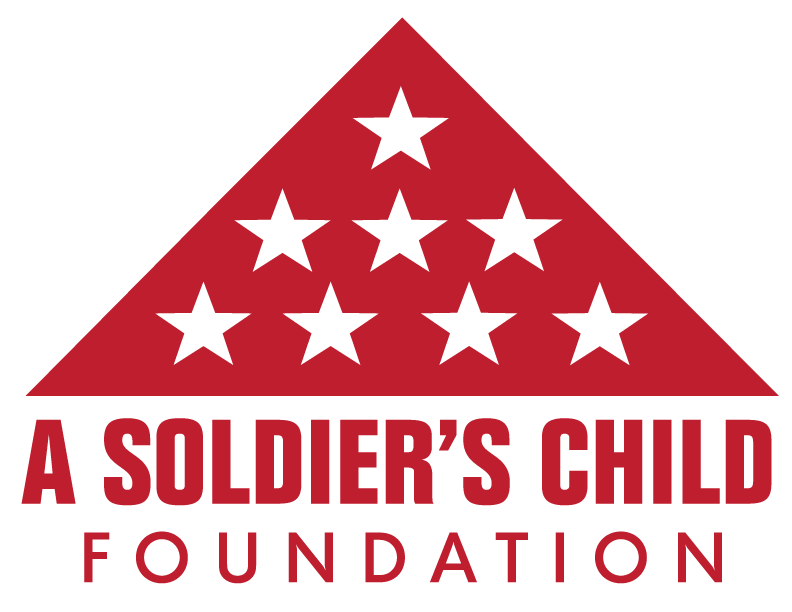Scag Safety
Your Safety Is Very Important to Us!
Proper operation is essential when using any piece of equipment. Please review the following pages to learn more and be sure to read your operator’s manual before operating your Scag mower.
Your mower is only as safe as the operator. Carelessness or operator error may result in serious bodily injury or death. Hazard control and accident prevention are dependent upon the awareness, concern, prudence and proper training of the personnel involved in the operation, transport, maintenance and storage of the equipment. Make sure every operator is properly trained and thoroughly familiar with all of the controls before operating the mower. The owner/user can prevent and is responsible for accidents or injuries occurring to themselves, other people or property.
Review and become familiar with the information presented in your owner’s manual for detailed information on the proper and safe operation of your Scag mower. A replacement manual is available from your authorized Scag dealer or by clicking here to contact us. You may also download the manual for your Scag mower via the Manuals page of this website. Be sure to have the complete model and serial numbers from your machine.
The “Tips for Safe Operation of Your Scag Zero-Turn Mower” videos from Scag are available near the top of this page. If needed, click here to request a copy of these videos on DVD.
General Safety Guidelines
Important Rules to Follow All the Time
- Keep all shields in place, especially the grass discharge chute.
- Before performing any maintenance or service, stop the machine and remove the spark-plug wire and ignition key.
- If a mechanism becomes clogged, stop the engine before cleaning.
- Keep hands, feet and clothing away from power-driven parts.
- Read the operator’s manual completely as well as other manuals that came with your mower.
- Keep others off the tractor (only one person at a time).
- DO NOT mow on wet grass. Wet grass reduces traction and steering control.
- DO NOT permit untrained personnel to operate the machine.
- Use only Scag-approved attachments and accessories.
- NEVER allow children to operate this riding mower.
- Do not allow adults to operate this machine without proper instructions.
- DO NOT mow when children and/or others are present. Keep children out of the mowing area and in the watchful care of a responsible adult other than the operator. Be alert and turn the machine off if a child enters the area.
- DO NOT allow children to ride or play on the machine; it is not a toy.
- Clear the area to be mowed of objects that could be picked up and thrown by the cutter blades.
- DO NOT carry passengers.
- If the operator(s) or mechanic(s) cannot read English or Spanish, it is the owner’s responsibility to explain the contents of the owner’s manual to them.
- DO NOT wear loose-fitting clothing. Loose clothing, jewelry or long hair could get tangled in moving parts. Do not operate the machine wearing shorts; always wear adequate protective clothing including long pants. Wearing safety glasses, safety shoes and a helmet is advisable and is required by some local ordinances and insurance regulations.
- DO NOT operate the machine under the influence of alcohol or drugs.
- Always wear hearing protection. Operating this machine over prolonged periods of time can cause loss of hearing.
- Keep the machine and attachments in good operating condition. Keep all shields and safety devices in place. If a shield, safety device or decal is defective or damaged, repair or replace it before operating the machine.
- Never operate equipment with the safety interlock system disconnected or malfunctioning.
- Be sure the interlock switches are functioning correctly.
- Fuel is flammable; handle it with care. Fill the fuel tank outdoors. Never fill it indoors. Use a funnel or spout to prevent spillage. Clean up any spillage before starting the engine.
- DO NOT add fuel to a running or hot engine. Allow the engine to cool for several minutes before adding fuel. Never fuel indoors or in enclosed trailers.
- Keep flammable objects (cigarettes, matches, etc.), open flames and sparks away from the fuel tank and fuel container. Use only approved containers.
- DO NOT use E85 fuel. Using E85 fuel will cause severe damage to the engine.
- Equipment must comply with the latest requirements per SAE J137 and/or ANSI/ASAE S279 when driven on public roads. If the mower is driven on public roads, it must comply with state and local ordinances as well as SAE J137 and/or ANSI/ASAE S279 requirements. Contact your local authorities for regulations and equipment requirements.
- DO NOT operate without the side-discharge chute installed and in the down position, or without an optional grass catcher or mulch plate completely installed.
- Check the blade mounting bolts at frequent intervals for proper tightness.
- Make sure all hydraulic fluid connections are tight and all hydraulic hoses and lines are in good condition before starting the machine.
- Know the function of all controls and how to stop quickly.
- DO NOT operate on steep slopes. To check a slope, attempt to back up it (with the cutter deck down). If the machine can back up the slope without the wheels slipping, reduce speed and use extreme caution.
- Under no circumstances should the machine be operated on slopes greater than 15 degrees (20 degrees for the V-Ride™ II).
- ALWAYS follow OSHA-approved operation.
- DO NOT mow near drop-offs, ditches or embankments. The machine could suddenly roll over if a wheel goes over the edge or if the edge caves in.
- Reduce speed when turning, operating on slopes, or on slick or wet surfaces. Allow extra distance to stop.
- Operate the machine smoothly with no sudden turns, starts or stops on a slope.
- NEVER tow on slopes. The weight of the towed equipment may cause loss of traction and loss of control.
- Reduce speed and exercise extreme caution on slopes and in sharp turns to prevent tipping or loss of control. Be especially cautious when changing directions on slopes.
- To prevent tipping or loss of control, start and stop smoothly, avoid unnecessary turns and travel at reduced speed.
- When using any attachment, never direct the discharge of material toward bystanders or allow anyone near the machine while in operation.
- Before attempting to start the engine, the operator must be in the seat and must disengage power to the cutter deck, place the steering control levers in the neutral position and engage the parking brake.
- If the mower discharge ever plugs, shut off the engine, remove the ignition key and wait for all movement to stop before removing the obstruction.
- DO NOT use your hand to dislodge the clogged discharge chute. Use a stick or other device to remove clogged material after the engine has stopped running and the blades have stopped turning.
- Be alert for holes, rocks, roots and other hidden hazards in the terrain. Keep away from any drop off. Beware of overhead obstructions (low limbs, etc.), underground obstacles (sprinklers, pipes, tree roots, etc.). Cautiously enter a new area. Be alert for hidden hazards.
- Disengage power to the cutter deck before backing up. Do not mow in reverse unless absolutely necessary and then only after observation of the entire area behind the mower. If you must mow in reverse, maintain a constant lookout to the rear of the machine and mow slowly.
- DO NOT turn sharply. Use care when backing up.
- Disengage power to the cutter deck before crossing roads, walks or gravel drives.
- Mow only in daylight or good artificial light.
- NEVER raise the deck with the blades engaged.
- Take all possible precautions when leaving the machine unattended, such as disengaging the mower, lowering the attachments, setting the parking brake, stopping the engine and removing the key.
- Disengage power to the attachments when transporting or when not in use.
- The machine and attachments should be stopped and inspected for damage after striking a foreign object, and damage should be repaired before restarting and operating the machine.
- DO NOT touch the engine or the muffler while the engine is running or immediately after stopping. These areas may be hot enough to cause a burn.
- DO NOT run the engine inside a building or a confined area without proper ventilation. Exhaust fumes are hazardous and contain carbon monoxide which can cause brain injury and death.
- Keep hands and feet away from cutter blades and moving parts. Contact can injure.
- Use care when loading or unloading the machine onto a trailer or truck.
- Use care when approaching blind corners, shrubs, trees or other objects that may obscure vision.
- NEVER leave the machine running unattended.
Roll-Over Protection System (ROPS)
Scag zero-turn riding mowers are designed for good traction and stability under normal mowing conditions. However, caution must be used when traveling on slopes, especially when the grass is wet. Do not mow on wet grass. Wet grass reduces traction and steering control.
All new commercial-warranted Scag zero-turn riding mowers are equipped with standard roll-over protection systems (ROPS)*. Any or all parts of the ROPS MUST NOT be removed. Failure to adhere to this guideline could result in injury or death.
The potential exposure of the seat belt to severe environmental conditions make it crucial to inspect the seat-belt system regularly. It is recommended that the seat belt be inspected before each mowing for signs of damage. Any seat-belt system that shows cuts, fraying, extreme or unusual wear, significant discoloration due to UV exposure, dirt or stiffness, abrasion to the seat-belt webbing, or damage to the buckle, latch plate, hardware or any other obvious problem should be replaced immediately.
ROPS Operation Instructions
- Securely fasten seat belt during operation of the machine (a mower equipped with fixed-position ROPS or with foldable ROPS in “up” position).
- Check the area carefully before mowing for proper overhead clearance (branches, doorways, etc.).
- DO NOT contact any overhead object with the roll bar.
Foldable ROPS Operation Instructions
- Keep the roll bar in the raised and locked position and the seat belt securely fastened during operation. Failure to do so could cause serious injury or loss of life.
- There is no roll-over protection when the roll bar is in the “down” position.
- Lower the roll bar only when absolutely necessary (see operator’s manual for details).
- DO NOT wear the seat belt when the roll bar is in the “down” position.
- ALWAYS wear seat belt when roll bar is in the “up” position.
- Raise the roll bar as soon as clearance permits (see operator’s manual for details).
- DO NOT contact any overhead object with the roll bar.
- * NOTE: Roll-over protection systems (ROPS) are available for some previous Scag zero-turn rider models. Contact your local Scag dealer for more information and to order a ROPS for your mower. Liberty® Z mower does not feature ROPS.
Mowing Recommendations
Operating Tips for Better Results
- Be sure to keep your mower’s blades sharp. A dull blade will tear grass, resulting in poor lawn appearance, and will require extra power.
- Cut grass when it is dry and not too tall. Do not cut grass too short (cut off 1/3 or less of existing grass for best results). Mow frequently.
- Keep mower and discharge chute clean.
- When mowing wet or tall grass, mow the grass twice. Raise the mower to the highest setting for the first pass and then make a second pass to the desired height.
- Use a slow travel speed for trimming purposes.
- Operate the engine at full throttle for best cutting. Mowing with a lower RPM causes the cutter blades to tear the grass. The engine is designed to be operated at full speed.
- Use the alternate-stripe pattern for best lawn appearance. Vary the direction of the stripe each time the grass is mowed to avoid wear patterns in the grass. Visit our Lawn Striping page to learn more about how to create great-looking lawn-stripe patterns in your lawn.
- Do not travel forward over a curb. The mower will hang up on the curb. Raise the deck and travel backwards over the curb at a 45-degree angle.
- Smooth operation of the steering levers will produce smooth mower operation. While learning the operation of the steering controls, keep the travel speed low.
- The discharge chute must not be removed and must be kept in the lowest position to deflect grass clippings and thrown objects downward. Direct the side discharge away from sidewalks or streets to minimize cleanup of clippings. When mowing close to obstacles, direct the discharge away from the obstacles to reduce the chance of property damage by thrown objects.
Although zero-turn mowers can turn in very tight circles, it may not be the best practice to do so on the grass. Even tight turns have the potential to cause turf damage. The best way to prevent and/or greatly minimize potential turf damage is to perform 3-point/Y-turns at the end of a mowing row rather than zero-turns to change direction. It is still a fast maneuver and will reduce the potential of turf damage greatly.
- Step 1 – At the end of the mowing path, turn toward the next mowing path.
- Step 2 – Reverse while turning slightly in the opposite direction to align the mower with the next mowing row.
- Step 3 – Proceed into the next mowing path.
A Mower Is Not A Toy!
Learn more about how you can keep you and your family safe from the Outdoor Power Equipment Institute.
